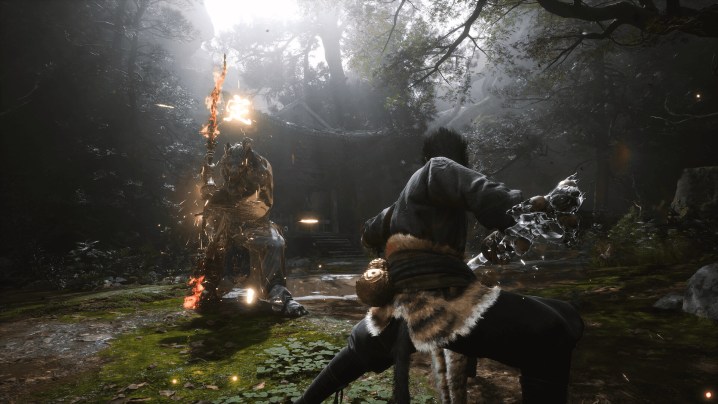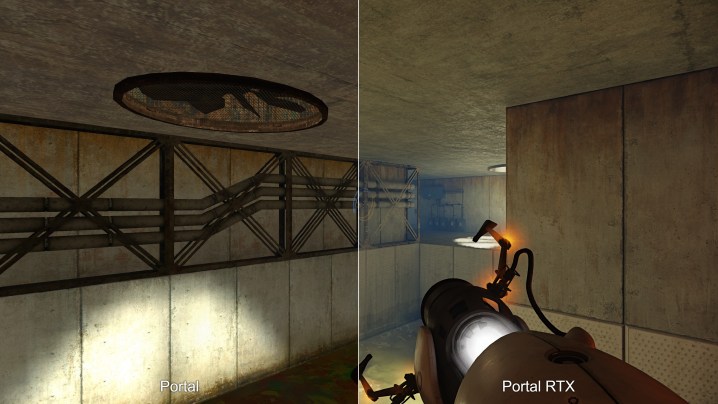My most anticipated game of 2024 is getting the full Nvidia treatment
Black Myth: Wukong could be one of the biggest games of 2024, and it's getting Nvidia's full RTX treatment.

 Game Science
Game ScienceAs if I wasn’t already looking forward to Black Myth: Wukong enough, Nvidia just announced that the game is getting the full RTX treatment when it launches on August 20. We see new games with ray tracing and Nvidia’s Deep Learning Super Sampling (DLSS) all the time, but Black Myth: Wukong is joining a very small list of titles that currently leverage the full suite of features Nvidia has available.
The game comes with, as Nvidia describes it, “full ray tracing.” That undersells the tech a bit. As we’ve seen with games like Alan Wake 2, “full ray tracing” means path tracing. This is a more demanding version of ray tracing where everything uses the costly lighting technique. It’s taxing, but in the new games that we’ve seen with path tracing, such as Cyberpunk 2077 and Portal with RTX, it looks stunning.
To get Black Myth running at decent frame rates, the game will use DLSS 3.5. This includes the full suite of DLSS features, including Super Resolution, Frame Generation, and Ray Reconstruction, the last of which is particularly noteworthy. Currently, it’s only available in two titles: Alan Wake 2 and Cyberpunk 2077.
Black Myth: Wukong isn’t the third game to receive support, though. Nvidia also announced that it’s bringing Ray Reconstruction through DLSS 3.5 to both Portal with RTX and Naraka: Bladepoint. The Portal with RTX upgrade is available now, so you can download the game for free and try out the new additions — given you have an RTX 40-series GPU.
 Digital Trends
Digital TrendsThe details on Naraka are a bit sparse. Nvidia says it will get a path tracing update “soon” to three areas that are available through the PvE and PvP modes. We don’t know what three areas those are now, but Nvidia says further areas will see a path tracing upgrade in the future.
Nvidia first announced DLSS 3.5 in August of last year, with the first game arriving in September (Cyberpunk 2077’s Phantom Liberty expansion). Since then, we haven’t heard about any other games sporting the tech. Black Myth: Wukong launching with support is a positive sign that we’ll still see more games with features like Ray Reconstruction, though I don’t imagine it will be a mainstay like upscaling tech in modern titles.
Maybe we’ve seen such slow adoption due to how restrictive DLSS 3.5 is. You need an RTX 40-series GPU to unlock the full suite of features, which, even with GPU prices falling, are still expensive graphics cards. In addition, the impressive Ray Reconstruction feature is only currently available in demanding path tracing modes, effectively locking out lower-end options in Nvidia’s current-gen lineup.
Editors' Recommendations
Nvidia is missing a golden opportunity in PC gaming All ray tracing games on PC: AMD Radeon and Nvidia RTX ray tracing Half-Life 2 is getting Nvidia’s RTX treatment with DLSS 3 Why I leave Nvidia’s game-changing tech off in most games 7 ways EA’s Black Panther game can get the most out of the comics booksJacob Roach is a writer covering computing and gaming at Digital Trends. After realizing Crysis wouldn't run on a laptop, he…
I tested Nvidia’s new RTX feature, and it fixed the worst part of PC gaming
You wouldn't suspect that a mod like Portal: Prelude RTX would debut such a major piece of kit for the future of PC gaming. But lo and behold -- it's the first game we've seen with Nvidia's new RTX IO, a feature that was announced nearly three years ago.
It's not as flashy as ray tracing or DLSS, operating in the background and offering a slew of benefits without drawing attention to them. But according to my testing, RTX IO may have a bigger impact on PC gaming than any other RTX features.
What is RTX IO?
Portal: Prelude RTX | RTX IO Off vs On Comparison – Cake Scene
How Intel could use AI to tackle a massive issue in PC gaming
Intel is making a big push into the future of graphics. The company is introducing seven new research papers to Siggraph 2023, an annual graphics conference, one of which tries to address VRAM limitations in modern GPUs with neural rendering.
The paper aims to make real-time path tracing possible with neural rendering. No, Intel isn't introducing a DLSS 3 rival, but it is looking to leverage AI to render complex scenes. Intel says the "limited amount of onboard memory [on GPUs] can limit practical rendering of complex scenes." Intel is introducing a neural level of detail representation of objects, and it says it can achieve compression rates of 70% to 95% compared to "classic source representations, while also improving quality over previous work."
Sorry Starfield, but Chants of Sennaar is now my most anticipated September game
For the past five years, I’ve been chasing the high I felt the first time I played Return of the Obra Dinn. Lucas Pope’s hit deduction game is unlike anything I’ve ever played, making me feel like a total genius in ways few other games have. The puzzler tasks players with exploring a pirate ship full of dead bodies and piecing together who everyone is and what happened to them. It feels impossible at first due to how little information you have, but finds ingenious ways to lead players to the correct solutions through context clues. No game since has nailed that winning design philosophy in the same way … but Chants of Sennaar may be the game to finally do it.
Chants of Sennaar - Release Date Reveal Trailer

 BigThink
BigThink 































.jpeg?trim=0,89,0,88&width=1200&height=800&crop=1200:800)



